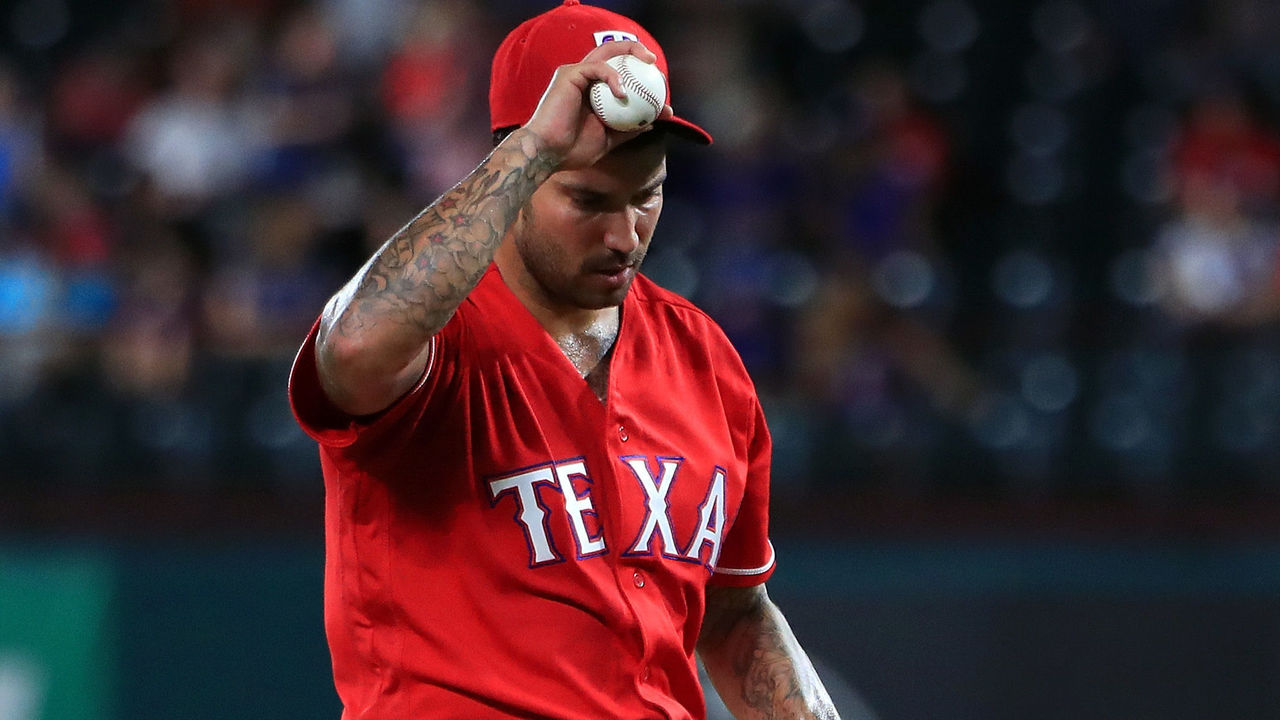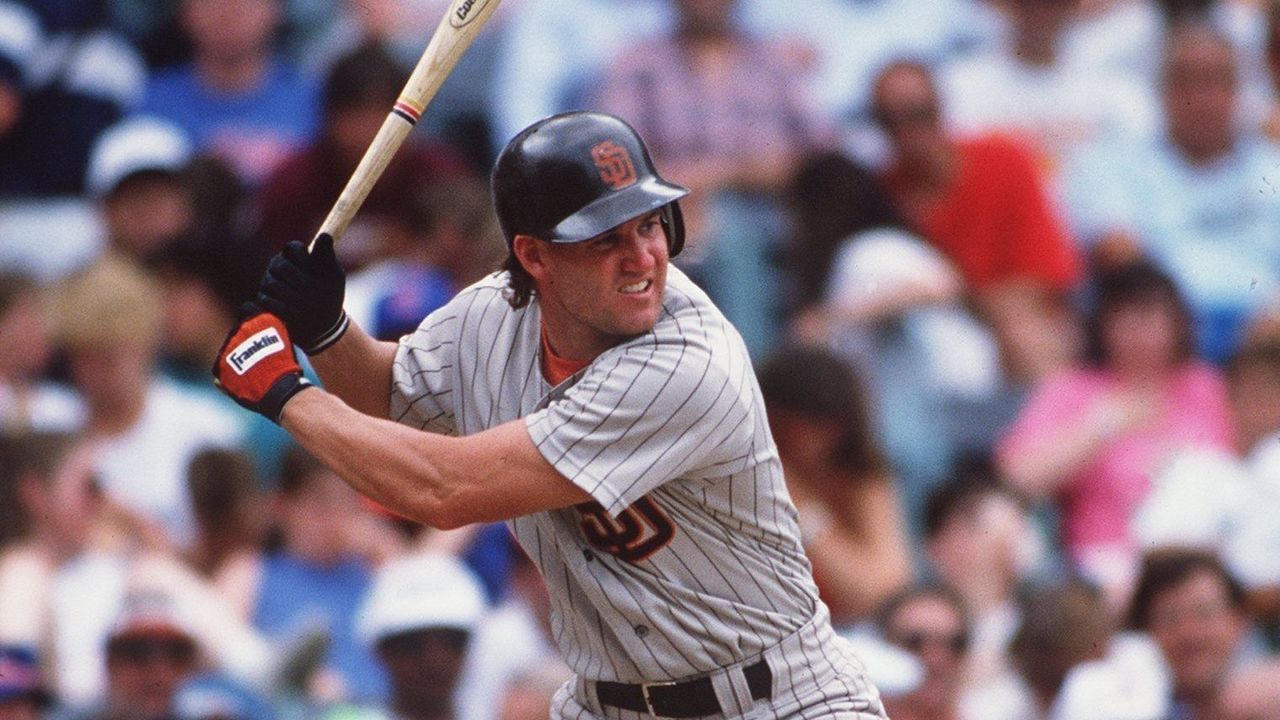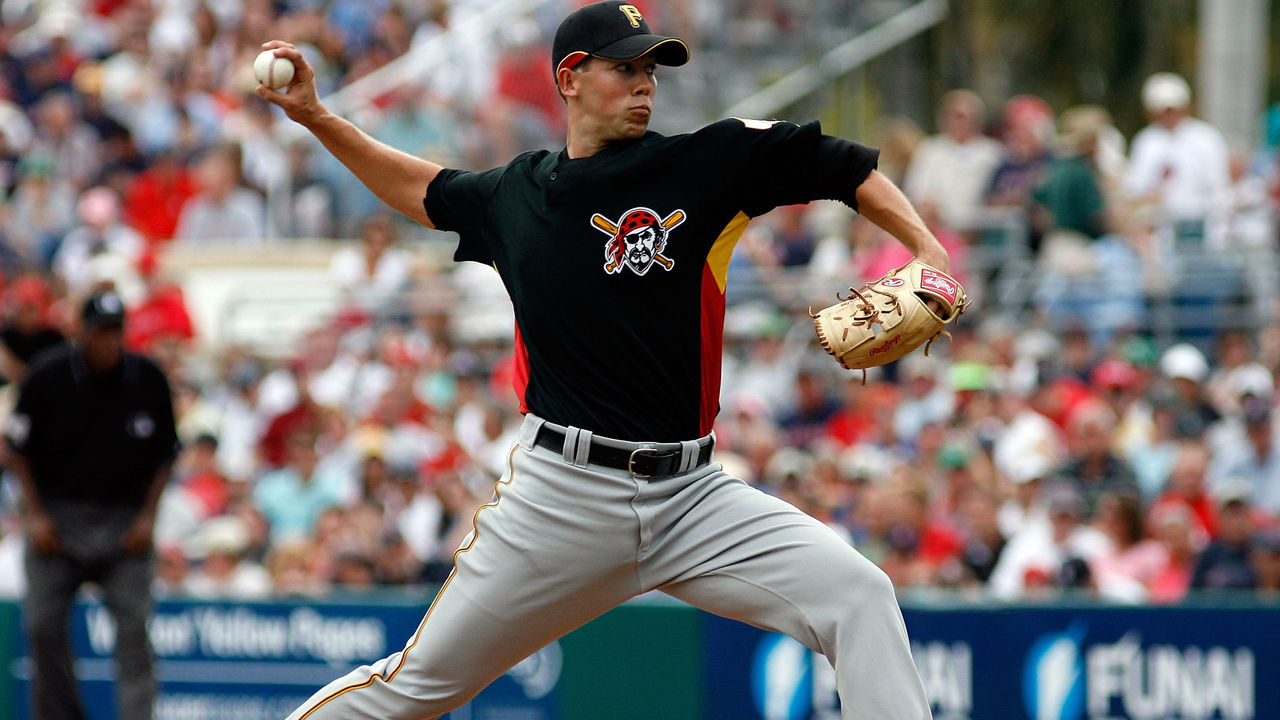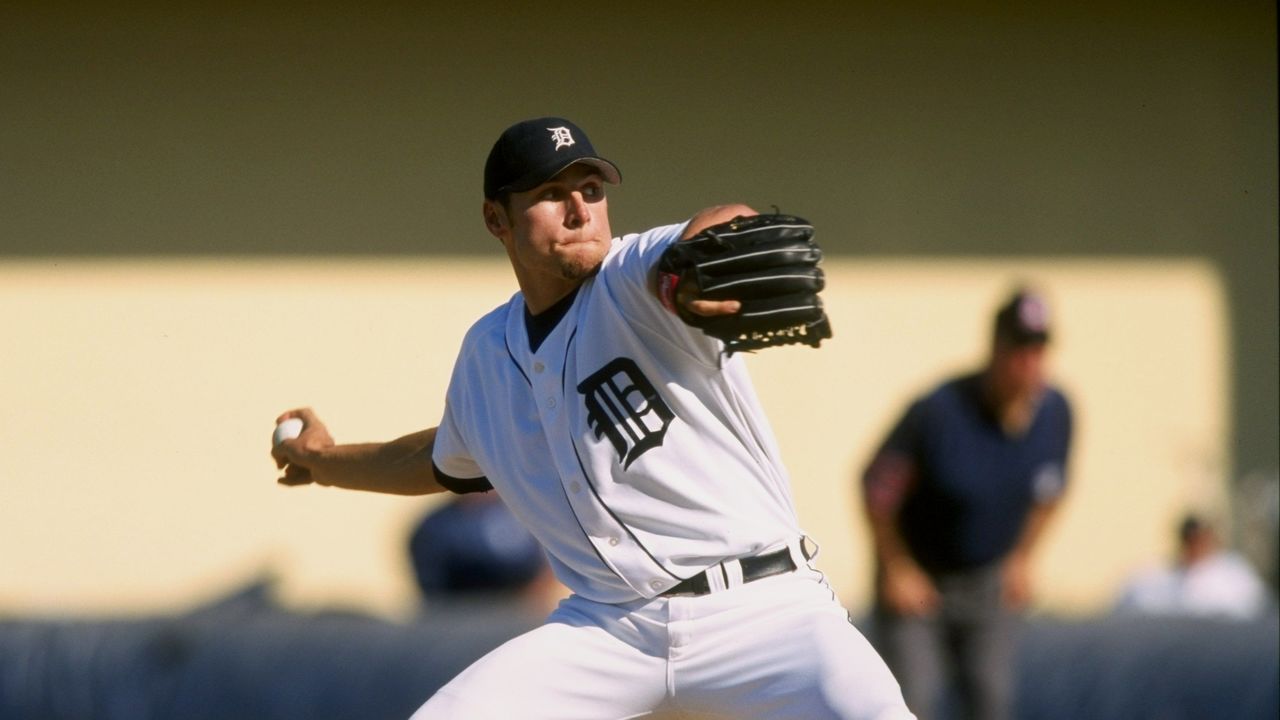Is Mark Appel the worst 1st overall pick in MLB history?
On Thursday, Mark Appel announced his plans to take an "indefinite break" from baseball, only a few months after he had been designated for assignment by the Philadelphia Phillies. He's now one of only three first overall picks to have never reached the majors.
Appel's career will certainly go down as an all-time bust - but is he the biggest flop of a No. 1 pick ever? First overall picks have averaged 22.3 career wins above replacement in the major leagues, per Baseball-Reference, and only two have reached the Hall of Fame - so Appel does have plenty of company. To figure out where Appel ranks among the worst, here's a "countdown" of sorts as we rank the 10 worst first overall picks in MLB history.
10. Matt Bush, Padres, 2004

Bush, a San Diego native, was taken by his hometown team one spot ahead of Justin Verlander - and that's not even the biggest reason why he's listed here. Within weeks of signing, Bush was arrested after a bar fight and the Padres suspended him. On the field, he was converted to a pitcher in 2007 after stalling out at Single-A as a shortstop; this led to Tommy John surgery in 2008. When he was caught on video committing a drunken assault, the Padres traded him to the Blue Jays - who subsequently released him within a month after another off-field incident. His third DUI arrest as part of a hit-and-run incident in 2012 led to both his release from the Rays and a no contest plea; Bush served just under three years in prison.
Bush did go back to baseball after being released from jail, and he is now a reliever for the Texas Rangers. He's compiled a 3.08 ERA and 2.3 bWAR over the past two seasons. Still, this can hardly be called a "feel-good story" given the nature of his many off-field issues, and while he ultimately did make good on some of his athletic promise, Bush is a no-brainer for this list.
9. Shawn Abner, Mets, 1984

Here are a few of the players the Mets could have chosen instead of Shawn Abner with this pick: Mark McGwire (who went 10th overall), Greg Maddux (31st), Tom Glavine (47th), Al Leiter (50th), and Ken Caminiti (71st). That list keeps going, too. But sadly for Mets fans, it was Abner who they grabbed with this pick out of Mechanicsburg, Pa. He ended up producing a minus-1.3 WAR over six years - while never actually playing for the Mets. He was eventually traded to the Padres before making his major-league debut. The only good news for the Mets is that they turned Abner into Kevin McReynolds, who helped them to a division title in 1988.
8. Bryan Bullington, Pirates, 2002

After a dominating collegiate career at Ball State (he's still the Mid-American Conference leader in career strikeouts), the Pirates chose Bullington first overall because they thought he'd reach the majors faster than second pick B.J. Upton. Not only did Upton beat Bullington to the majors by a season, but Bullington's six-game Pirates career amounted to minus-0.3 WAR - matching that of his entire five-year career with four teams. He got his first and only big-league win with the Royals on Aug. 15, 2010, close to five years since his big-league debut. He'd make just six more appearances in the majors.
7. Al Chambers, Mariners, 1979
Happy Birthday to former 1979 #1 overall pick Al Chambers!!! @Mariners @70sBaseball @MLB pic.twitter.com/NvZh1DsFEb
— Gio/wthballs blog (@wthballs) March 24, 2017
The scout who drafted Chambers described him as having "the most power of any free agent I've seen," according to a 2004 Seattle Times article. But that promise went completely unfulfilled. Chambers - who turned down a football scholarship at Arizona State for the Mariners' $85,000 bonus - hit only two homers in his 57 big-league games across parts of three seasons, and was worth minus-0.5 WAR upon his release in 1986. He retired two years later after a couple of sub-par minor-league campaigns and one year in Mexico.
6. Matt Anderson, Tigers, 1997

Anderson and his triple-digit fastball went to the Tigers after a stellar NCAA career at Rice, and he was in their bullpen the following season. His 1998 rookie campaign was the only year in which his ERA was below four. Anderson never put it together despite being blessed with a brilliant fastball, and a torn shoulder muscle in 2002 was the final straw; he was out of the majors by 2005, and hasn't pitched since 2008. His minus-0.5 WAR is the lowest by any pitcher drafted first overall. To make matters worse for the Tigers, picks two through five - J.D. Drew, Troy Glaus, Jason Grilli, and Vernon Wells - all went on to have All-Star careers.
5. Danny Goodwin, 1971 and 1975
Danny Goodwin spent 7 seasons in the MLB with the Angels, Twins, and A's. Danny was a 3-Time All-American for @BsbSouthern #JaguarPride pic.twitter.com/nnnUq0s03T
— SouthernUBaseball (@BsbSouthern) September 13, 2017
It figures that the only two-time first overall pick in MLB draft history made little to no impact. Goodwin was first selected No. 1 by the White Sox in 1971 - ahead of Hall of Famers Jim Rice, George Brett, and Mike Schmidt - but he opted to play college ball at Southern A&M instead. His stock clearly didn't fall because four years later the Angels took Goodwin first overall again, and again the pick turned out to be a mistake. His career in Anaheim lasted just 63 games, and Goodwin's entire big-league career consisted of 252 appearances with three teams, 151 of which came as a designated hitter. At least the Angels got some games out of him, unlike the White Sox.
4. Steve Chilcott, Mets, 1966

On the recommendation of none other than Casey Stengel, the Mets took Chilcott first overall in 1966 thinking he was their catcher of the future - but he never played a game in Flushing. In July of 1967 - one month after the second overall pick in 1966 had reached the majors - Chilcott, then at Single-A, suffered a shoulder injury that derailed his career. He kept trying to come back in the Mets system, and then briefly with the Yankees, but retired in 1972 having never advanced above Triple-A because of that wrecked shoulder. As for the second overall pick who the Mets passed on to take Chilcott? You might have heard of him. His name was Reggie Jackson.
3. Mark Appel, Astros, 2013
There's an interesting parallel history here where the Astros take Kris Bryant first overall instead of Appel, which not only makes them an even scarier juggernaut than they already are, but dooms the Cubs - who have to take Appel No. 2 instead of Bryant - to an even longer cursed existence featuring billy goats. One stroke of a pen really can change everything.
Anyway, despite his decorated college career with the Cardinal, Appel just couldn't cut it in the professional ranks, and ends up as the third-worst bust in our books. Still, it appears that the 26-year-old is at peace with how his career turned out.
I think it would if baseball was my identity. @iamjoonlee and I got to talk a lot about identity perspective. Putting your whole identity in something as fleeting as baseball (or living up to expectations) is a dangerous way to live. I'm rooted in much longer lasting things. https://t.co/oMzP1wHUlK
— Mark Appel (@MAppel26) February 1, 2018
Best of luck, Mark, wherever it goes from here.
2. David Clyde, Rangers, 1973

Clyde was heralded as the next Sandy Koufax - and the Rangers, who were then struggling on and off the field, bought in big time. Not only did they draft Clyde first overall, but they brought the Houston product straight to the majors 20 days after he finished high school in order to sell tickets. His debut start on June 27, 1973, came in front of the first sellout crowd in Rangers history (they had only existed for two years), and Clyde struck out eight with two runs allowed in five innings.
That was the high point. The Rangers never sent him down in '73 to keep attendance up - he didn't go to the minors at all until 1975 - and Clyde finished his rookie year with a 5.01 ERA in 18 starts. Because they rushed and overused him to sell tickets, he quickly developed arm trouble. When he wasn't hurt Clyde was in the minors for all of 1976 and '77, then briefly resurfaced with Cleveland. Though he attempted a few comebacks in the 1980s, the "Next Koufax" ended up with a 4.63 ERA in just 84 big-league games.
1. Brien Taylor, Yankees, 1991
25 years ago today, the Yankees selected Brien Taylor with the first overall pick in the 1991 draft.
— High Heat Stats (@HighHeatStats) June 3, 2016
Oops. pic.twitter.com/SoD56i7XaE
He's perhaps the most famous, and easily the most tragic, bust of them all. In a series of 2014 interviews with ESPN, former Yankees GM Gene Michael compared Taylor to Randy Johnson, while his agent Scott Boras called Taylor the best high school pitcher he'd ever seen. Taylor rocketed through the Yankees' system as the top prospect in the game, striking out 10.4 batters per nine in 27 starts at High-A in 1992 and then continued his success at Double-A in '93. He may have been on track for a September call-up the following year.
But during the 1993 offseason, Taylor hurt his shoulder in a bar fight and needed significant shoulder surgery that not only cost him all of 1994, but robbed him of his devastating fastball. He never again pitched above Single-A, lost all sense of his control - over 23 BB/9 in nine 1996 starts - and retired in 2000 with a career ERA of 5.12. In 2012, Taylor was indicted on multiple federal drug charges, pleaded guilty to distributing crack cocaine, and was sentenced to just over three years in prison.
(Photos courtesy: Getty Images)